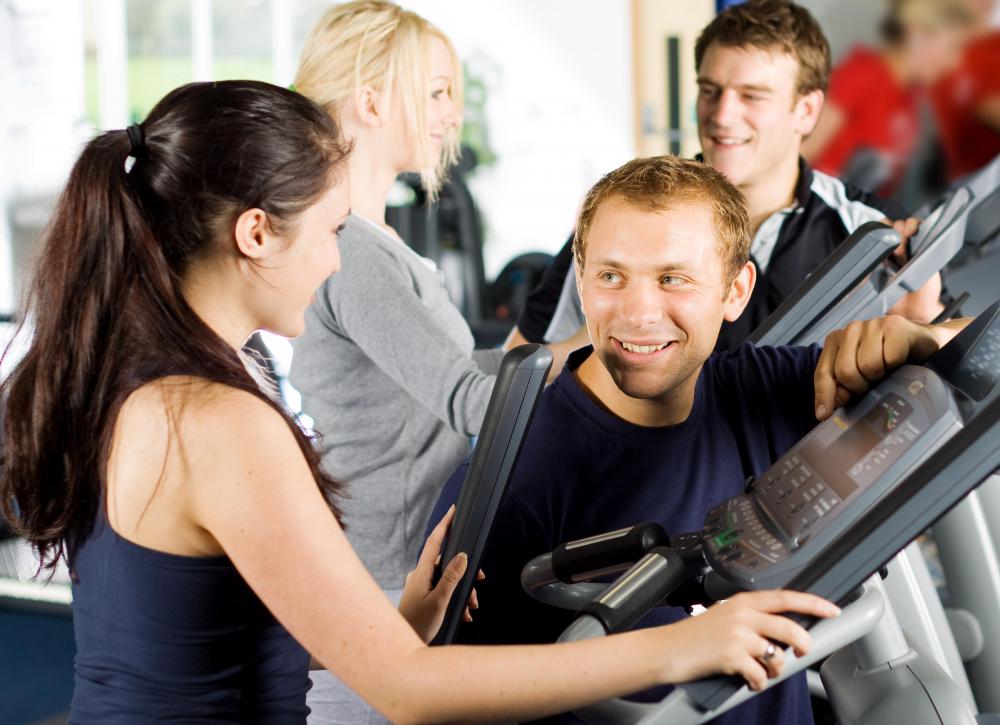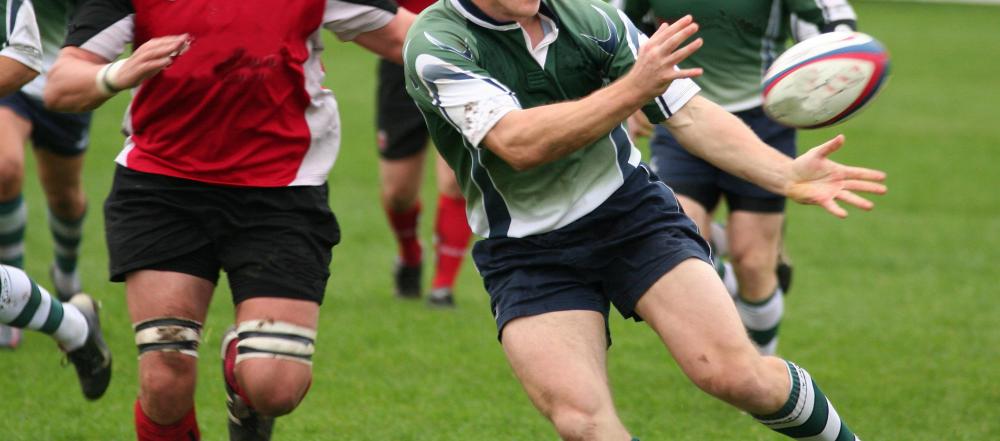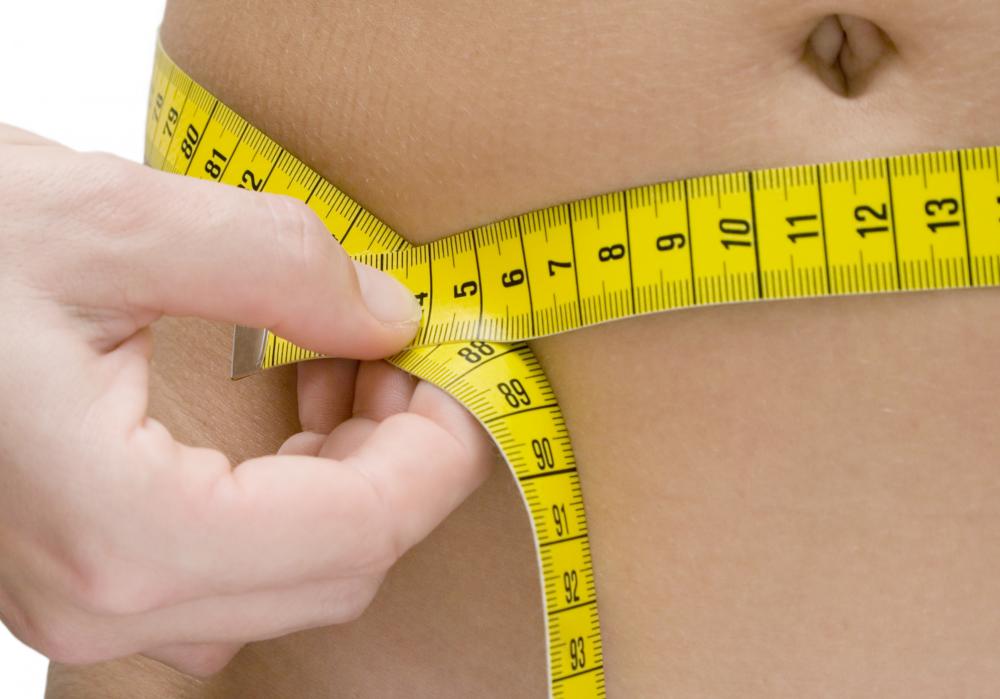At TheHealthBoard, we're committed to delivering accurate, trustworthy information. Our expert-authored content is rigorously fact-checked and sourced from credible authorities. Discover how we uphold the highest standards in providing you with reliable knowledge.
What are Anthropometric Measurements?
Anthropometric measurements are one way of assessing and conceptualizing a person’s total body fat. The measurements are usually done in a series, and typically include things like weight and height as well as skin fold density and measurements taken at certain precise points, in particular the hips and the wrist. Those tabulating the numbers, usually doctors, nurses, or fitness professionals, use the results to make assessments about a person’s overall health. Particularly in children, the numbers can also be an indication of growth progress. Measurements that are higher or lower than average often signal a problem with normal development. It’s important to keep in mind, though, that “average” results are just that — some people are naturally higher or lower while still being perfectly healthy. Concerns are usually only justified when measurements fall far outside the normal range.
Understanding Body Fat Generally

Body fat can be hard to measure since so much of it occurs internally. The results can be seen on the outside in many cases, but it still can be challenging to get an accurate picture of how much there really is on sight alone. The main goal of anthropometric measurements is take a number of different factors into account, and to use measurements of different parts of the body in order to get a better sense of the total fat situation. Results aren’t foolproof, but they can usually give clinicians and healthcare providers a rough sense of how a person is doing, which often leads into a plan for positive change.
Calculation Techniques

Height, weight, and skin fold thickness are usually the core elements. Bodily circumference at the waist, hip, chest, and wrist factor in, too. To measure weight, the examiner may use a self-zeroing scale, although these scales have to be recalibrated often. To measure the height, the examiner may use a device that looks like a vertical ruler; it consists of a sliding horizontal rod or paddle that will rest on the person’s head. The person will stand straight against the device with feet together to give an accurate measurement.

To measure the skin folds, the examiner will take measurements over several different areas of the body, such as the arm, lower hips, and lower ribs of the chest. These numbers are then averaged together to get a more accurate reading. In most cases the measurements are done on the right side of the body unless there is a medical reason not to do so.
As Concerns Babies and Young Children

One of the most common and routine uses of these measurements is during well-baby check-ups. The examiner will typically measure the baby's length and weight as well as the circumference of the child's head to ensure that growth is on track. The results can indicate problems with brain development and bone growth, and can also highlight nutritional issues the child might be facing. Measurements can also tell the examiner what illnesses a child might be more likely to get, such as anemia from malnutrition. Though the results are in no way definitive, they are often a starting place for identifying and diagnosing other potentially more serious issues.
For Nutritional Purposes

In adults, these numbers are very common when it comes to identifying a person’s “ideal” or “healthy” weight. Doctors typically collect them during routine health checks and, when possible, compare them not just to national or regional averages but also to the specific patient’s personal history. Significant changes over short amounts of time can indicate other issues, even if the readings are still in the normal range. Nutritionist may also use these measurements to help decide the best diet and exercise program for patients hoping to lose weight. Knowing where fat is can lead to more targeted loss programs.
Sports and Military Requirements
Anthropometric measurements are also commonly used by the military to see if recruits are fit for duty. If a recruit is dangerously overweight or has a troublesome fat index, he or she may have trouble during fitness training and be susceptible to illnesses and diseases and this would make him or her unfit for service in the military.
Anthropometric measurements are also used in fitness testing for sports teams. In general. anyone who plans to join a sports team or perform sports or fitness activities should know their fitness level before beginning. An unfit person starting rigorous training could cause severe damage to his body. People who know their relevant measurements can adjust the training program and diet for their specific fitness level, and the likelihood of serious injury may be reduced as a result.
AS FEATURED ON:
AS FEATURED ON:















Discussion Comments
Does anyone out there know of any studies or testing procedures that account for keeping footwear and seasonal clothing donned? I am part of a research team that is testing several thousand students in a major metropolitan school system.
For logistics (mainly time elements to minimize time away from class), we made a team decision to leave shoes on during weight and height measurements. We are hoping to use BMI in our ANOVA analysis with growth motor test performance. Anyone with any suggestions?
It was so much fun to see my little nephew get measured by the nurse every time we took him in when he was a baby. It was really good to keep tabs on him and make sure that he wasn't getting overweight. He was a very big baby, but he was just as tall as he was heavy, so we knew we were feeding him the right amount and generally the right kinds of foods.
I think it's really important, even if you don't have regular access to a nurse to investigate some anthropometric measurement tools so that you can keep track of your baby's growth. Stunted growth is sometimes the only indication that something is wrong and you want to catch anything early so the little one doesn't end up sick later in life.
@pastanaga - My favorite anthropometric measurements for calculating how I'm doing with the diet and so forth are waist and hip circumference. That's supposed to be one of the best indicators of health and attractiveness anyway, regardless of muscle tone or height and it's easy enough to measure at home.
Plus, if you are gaining muscle tone, you might not be able to trust the scales, since muscle weighs so much it might be adding on there. If you are losing weight though, it will show in your waist.
There's a bit of controversy surrounding the different ways of calculating body fat and BMI and other means of measuring how fat a person is. I know that BMI, for example, is falling out of favor now because it's notoriously unreliable when it comes to anyone who is in the least out of the average in terms of body shape or muscle mass.
So, for example, if you're fairly tall and have a lot of muscle, then you'll have a high BMI, perhaps even to the point of being labeled obese. And, if you are fairly skinny, with low muscle tone, you might be in the average zone even if you have an unhealthy percentage of body fat.
Anthropometric measurements, like using calipers, can be better, although they obviously require specialist equipment you won't find outside a gym. But, if you have lost a fair bit of weight, you might have loose skin that interferes with that kind of measurement as well.
Post your comments